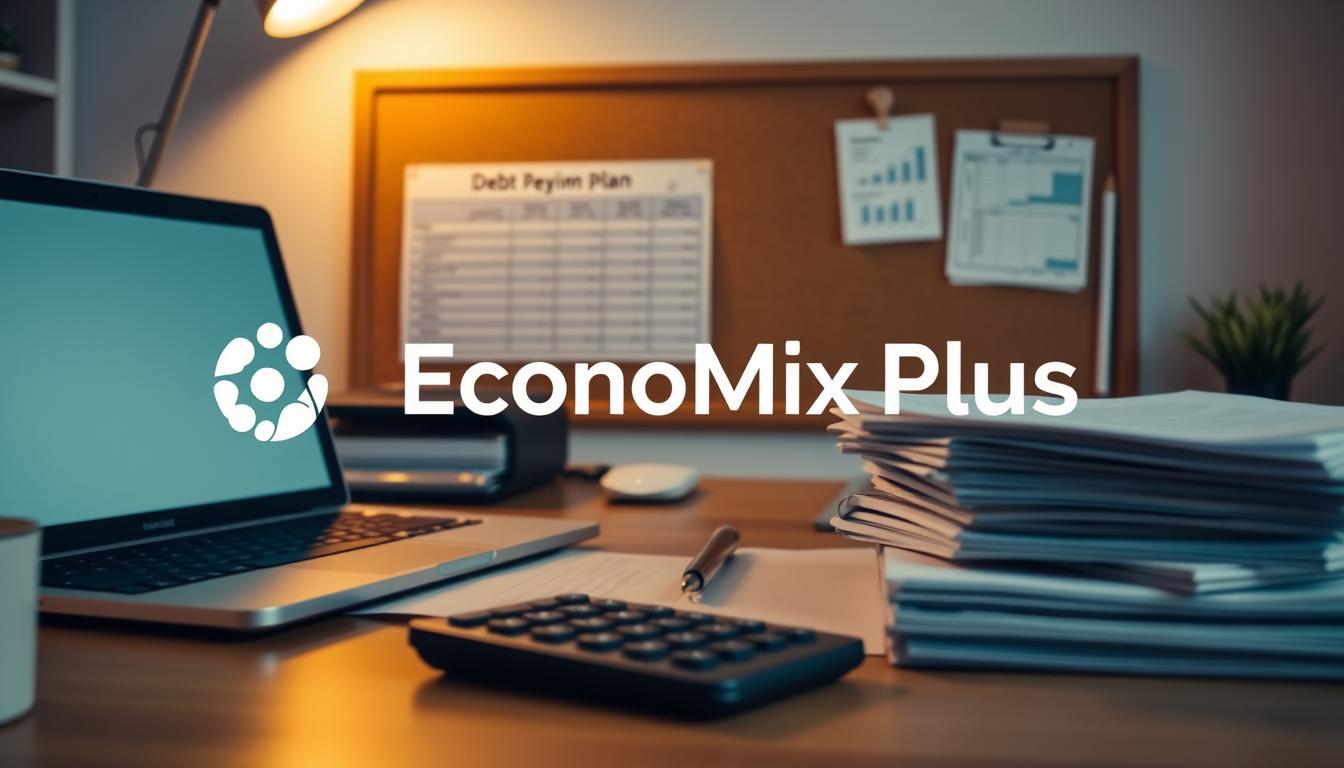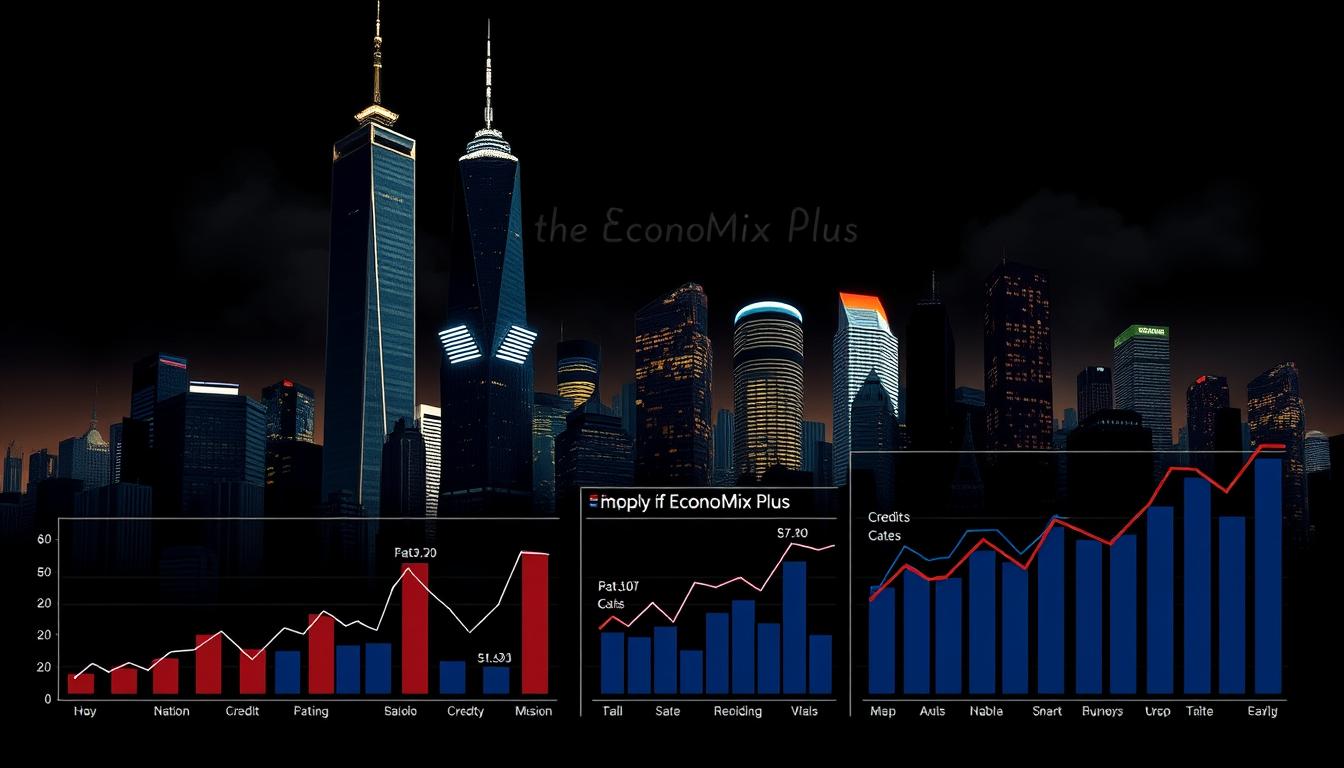Are you tired of living paycheck to paycheck as a freelancer or independent professional? With the freelance economy booming, it’s estimated that by 2027, freelancers will make up over 50% of the U.S. workforce. Managing your finances effectively is crucial to achieving financial stability in this growing industry.
Managing irregular income flows and self-employment responsibilities can be challenging. Traditional budgeting methods often fall short in addressing the unique financial needs of freelancers. This comprehensive guide will explore effective strategies tailored specifically for you.
Key Takeaways
- Effective budgeting strategies for irregular income
- Flexible budget creation for freelancers
- Tax planning and retirement savings tips
- Healthcare considerations for independent professionals
- Building a sustainable financial foundation
The Financial Reality of Freelance Work
Unlike traditional employees, freelancers experience a distinct financial reality, characterized by unpredictable income flows. This unpredictability makes it challenging to adhere to conventional financial planning and budgeting advice.

Understanding Irregular Income Patterns
Freelancers face a fundamentally different financial reality compared to traditional employees, with income that can fluctuate dramatically from month to month. You may experience feast-or-famine cycles where high-income periods are followed by weeks or months of minimal revenue. Understanding these irregular income patterns is essential for developing effective financial management strategies.
| Income Pattern | Characteristics | Financial Impact |
|---|---|---|
| Feast-or-Famine | High-income periods followed by low-income periods | Unpredictable cash flow, challenging budgeting |
| Steady Flow | Consistent income with minor fluctuations | Easier budgeting, stable financial planning |
The Challenge of Self-Employment Taxes
Self-employment taxes present a significant challenge for freelancers, who must set aside approximately 15.3% of their income to cover Social Security and Medicare taxes. Unlike traditional employees who have taxes automatically withheld, you must proactively manage your tax obligations through quarterly estimated payments. This requires careful planning and timely payments to avoid penalties.
By understanding these financial realities, you can take the first step toward creating an effective budgeting system that accommodates the unique aspects of freelance work.
Why Traditional Budgeting Methods Don’t Work for Freelancers
Unlike traditional employment, freelancing means dealing with variable income, making budgeting a challenge. As a freelancer, you’re likely to experience fluctuations in your income stream, which can make it difficult to stick to a traditional budget.
The Limitations of Fixed Monthly Budgets
Traditional budgeting methods often assume a consistent monthly income, which is not the reality for most freelancers. Fixed monthly budgets can create unnecessary stress when income inevitably fluctuates, potentially leading to cash flow problems during slower periods.

The Need for Flexible Financial Planning
Freelancers need budgeting approaches that can adapt to their changing financial circumstances. Flexible financial planning allows you to adjust your spending based on current income levels, rather than being locked into rigid budget categories. This approach helps in managing cash flow more effectively.
| Traditional Budgeting | Flexible Budgeting for Freelancers |
|---|---|
| Assumes fixed monthly income | Accommodates variable income |
| Creates stress during income fluctuations | Reduces financial stress with adaptability |
| Often leads to cash flow problems | Helps in managing cash flow effectively |
By understanding the limitations of conventional budgeting methods, freelancers can develop more appropriate financial strategies that accommodate income variability.
Creating a Variable Income Budget
A variable income budget is crucial for freelancers to navigate financial uncertainty. This approach allows you to adjust your expenses based on your income fluctuations, ensuring that you can cover essential costs during both high and low-income periods.
Calculating Your Baseline Monthly Expenses
To start, you need to determine your baseline monthly expenses, which include essential living and business costs such as housing, utilities, insurance, minimum debt payments, groceries, and critical business expenses. Identifying these expenses helps you understand the minimum amount you need to earn each month to cover your basic needs.
Prioritizing Essential vs. Non-Essential Spending
Categorizing your expenses into essential and non-essential helps you prioritize your spending. Essential expenses are those that you cannot defer or reduce, such as rent/mortgage and utilities. Non-essential expenses, on the other hand, can be adjusted or eliminated during low-income periods. This categorization gives you clarity on where you can cut back when necessary.
Adjusting Your Budget During High and Low-Income Periods
During high-income months, you should allocate surplus funds strategically – first to tax savings, then to your emergency fund, and finally to business investments or personal financial goals. Conversely, in low-income periods, your budget should automatically scale back to cover only the most essential expenses. 
| Income Level | Budget Allocation |
|---|---|
| High Income | Essential expenses + surplus allocation (tax savings, emergency fund, investments) |
| Low Income | Essential expenses only, minimizing non-essential spending |
By adopting a variable income budget, you can maintain financial stability despite income fluctuations. Regularly reviewing and adjusting your budget ensures it remains aligned with your changing business reality and financial priorities.
Separating Personal and Business Finances
Separating your personal and business finances is a fundamental step in establishing a stable financial foundation. As a freelancer, this separation is crucial for clarity, simplified tax preparation, and establishing your business as a legitimate enterprise.
Setting Up Dedicated Business Accounts
To effectively separate your finances, setting up dedicated business accounts is essential. This includes opening a business checking account and obtaining a separate business credit card. Such accounts create a clear division between your personal and professional expenses, making it easier to track business income and expenses.

Creating Clear Financial Boundaries
Creating clear financial boundaries involves more than just separate accounts; it’s about establishing a healthy financial relationship between you and your business. Paying yourself a regular “salary” from your business account to your personal account can help achieve this. This practice not only simplifies record-keeping and financial reporting but also provides protection in case of an audit by keeping your business and personal finances distinct.
By maintaining separate business finances and personal finances, you can accurately track your business income and expenses, making it easier to identify tax deductions and monitor your business profitability. This separation also prevents the common freelancer mistake of using business funds for personal expenses during cash flow shortages.
Top Budgeting Tips for Freelancers and Independent Professionals
Freelancing requires a flexible and adaptive approach to budgeting to ensure financial stability. As a freelancer, you face unique financial challenges that demand specialized strategies to manage your income and expenses effectively.
Track Every Expense Meticulously
Tracking every expense gives you complete visibility into your spending patterns, helping you identify areas where you can cut costs during lean periods. This meticulous approach to expense tracking is crucial for maintaining financial health.
Pay Yourself a Regular “Salary”
Paying yourself a regular “salary” by transferring a consistent amount from your business account to your personal account creates stability and helps you maintain personal financial discipline. This practice ensures you have a predictable income stream.

Build Multiple Income Streams
Building multiple income streams through diversified client relationships, passive income projects, or complementary services reduces your vulnerability to income fluctuations. This diversification strategy helps ensure a more stable financial foundation.
Create a Buffer for Slow Periods
Creating a buffer for slow periods by setting aside a percentage of your income during prosperous months ensures you can weather financial downturns without stress. This buffer acts as a financial safety net, providing peace of mind during uncertain times.
By implementing these budgeting tips, you can better manage your finances, reduce financial stress, and focus on growing your freelance business.
Smart Tax Management Strategies
Smart tax management strategies can significantly impact a freelancer’s financial well-being. As a freelancer, you’re responsible for managing your tax obligations, which can be complex and time-consuming.
Setting Aside Quarterly Tax Payments
It’s essential to set aside a portion of each payment you receive, typically 25-30%, to cover federal, state, and self-employment taxes. Establishing a dedicated tax savings account helps keep these funds separate from your operating capital.
Tracking Deductible Business Expenses
Meticulously tracking deductible business expenses throughout the year maximizes legitimate tax deductions and reduces your overall tax liability. Understanding which expenses qualify as legitimate business deductions requires ongoing education about tax regulations relevant to your industry.
Working with Tax Professionals
Working with a tax professional who specializes in self-employment can provide valuable guidance, identify overlooked deductions, and help you implement strategic tax planning. Consider consulting a certified tax professional to optimize your tax strategy.
Building a Robust Emergency Fund
As a freelancer, having a robust emergency fund is crucial for navigating the uncertainties of your career. It acts as a financial buffer during dry spells of work or unexpected expenses. The lack of employer-provided safety nets like paid sick leave or disability insurance makes this fund especially critical for freelancers.
Determining Your Optimal Emergency Fund Size
To determine your optimal emergency fund size, calculate your minimum monthly expenses and multiply that by the number of months you want to cover. Typically, freelancers aim for 6-12 months’ worth of expenses, rather than the standard 3-6 months. This fund should be held in a highly liquid savings account that allows immediate access without penalties or restrictions.
| Expense Type | Monthly Cost | 6-Month Total | 12-Month Total |
|---|---|---|---|
| Rent/Mortgage | $1,500 | $9,000 | $18,000 |
| Utilities | $200 | $1,200 | $2,400 |
| Groceries | $500 | $3,000 | $6,000 |
Strategies for Consistent Contributions
Strategies for consistent contributions include automatically transferring a percentage of each client payment to your emergency fund before allocating money to other purposes. Building your emergency fund gradually is more sustainable than trying to fund it all at once. For more insights on managing your finances effectively, visit Economix Plus to learn how regular saving can help you build a secure financial future.

Consider creating a tiered emergency fund with different portions allocated for different purposes: immediate emergencies, income gaps, and major business investments or pivots. Replenishing your emergency fund should be a top priority after you’ve used it. Your emergency fund provides not just financial security but also psychological benefits, allowing you to make better business decisions without fear-based reactions.
Planning for Retirement Without Employer Benefits
Freelancers face unique challenges in planning for retirement without the support of employer-sponsored retirement plans. As a freelancer, you’re responsible for creating your own retirement plan, which requires proactive initiative and a clear understanding of your financial situation.
Self-Employed Retirement Account Options
You have several retirement account options, including Solo401(k) plans, SEP IRAs, and Traditional or Roth IRAs. Solo401(k) plans allow for higher contribution limits and both employer and employee contributions, making them an attractive option. SEP IRAs offer simplicity and flexibility with contribution limits of up to 25% of your net self-employment income.
Creating a Sustainable Contribution Schedule
To build a robust retirement fund, creating a sustainable contribution schedule is crucial. Consider making smaller, regular contributions throughout the year and automating your retirement savings to ensure consistency. You may also want to increase your contribution percentage during high-income periods to compensate for times when you need to reduce or pause contributions, thus optimizing your tax benefits.
Managing Healthcare Costs as a Freelancer
The absence of employer-provided health insurance means you must take proactive steps to manage your healthcare expenses. As a freelancer, you’re responsible for securing your own health coverage, which can be both a challenge and an opportunity to tailor your insurance to your specific needs.
Health Insurance Alternatives
You have several health insurance alternatives to consider. Marketplace plans through Healthcare.gov can provide you with coverage, and you may qualify for premium subsidies based on your projected annual income. Additionally, professional associations and freelancer unions sometimes offer group health insurance plans with more competitive rates than individual marketplace policies.
Budgeting for Medical Expenses
When budgeting for medical expenses, consider not just your monthly premiums but also anticipated out-of-pocket costs like deductibles, copays, and medications. Creating a dedicated healthcare fund for expected and unexpected medical expenses can provide financial protection beyond what your insurance covers. You may also benefit from high-deductible health plans paired with Health Savings Accounts (HSAs), which offer tax advantages while allowing you to save for qualified medical expenses.
Digital Tools for Freelance Financial Management
Digital tools have revolutionized the way freelancers handle their financial tasks, making it easier to stay organized. With the right software, you can efficiently manage your business finances, track expenses, and ensure timely payments from clients.
Budgeting and Expense Tracking Software
Utilizing budgeting and expense tracking software like YNAB, Mint, or QuickBooks Self-Employed can provide real-time visibility into your financial situation. These tools automate expense categorization, making it easier to manage your business expenses.

Invoicing and Payment Collection Tools
Invoicing and payment collection tools such as FreshBooks, Wave, or Bonsai streamline the billing process. They provide professional-looking invoices and offer features like automatic payment reminders to ensure you get paid on time by your clients.

By leveraging these digital tools, you can simplify your financial management tasks, reduce administrative burdens, and focus on growing your business. For more insights on balancing personal budgets and emergency needs, visit this resource.
Conclusion
Effective financial management is the backbone of a successful freelance career. By implementing the budgeting tips outlined in this article, you can create a stable financial foundation that supports your business goals. Effective budgeting is not just about managing money; it’s about creating a sustainable business model that allows you to thrive in an unpredictable work environment.
Remember, budgeting as a freelancer is an ongoing process that requires regular review and adjustment. Start by implementing one or two strategies at a time, and as you become more comfortable with financial management, you’ll find it becomes an empowering practice that gives you greater control over your career. The benefits of proper financial management extend beyond basic stability to include improved decision-making and greater professional freedom.













